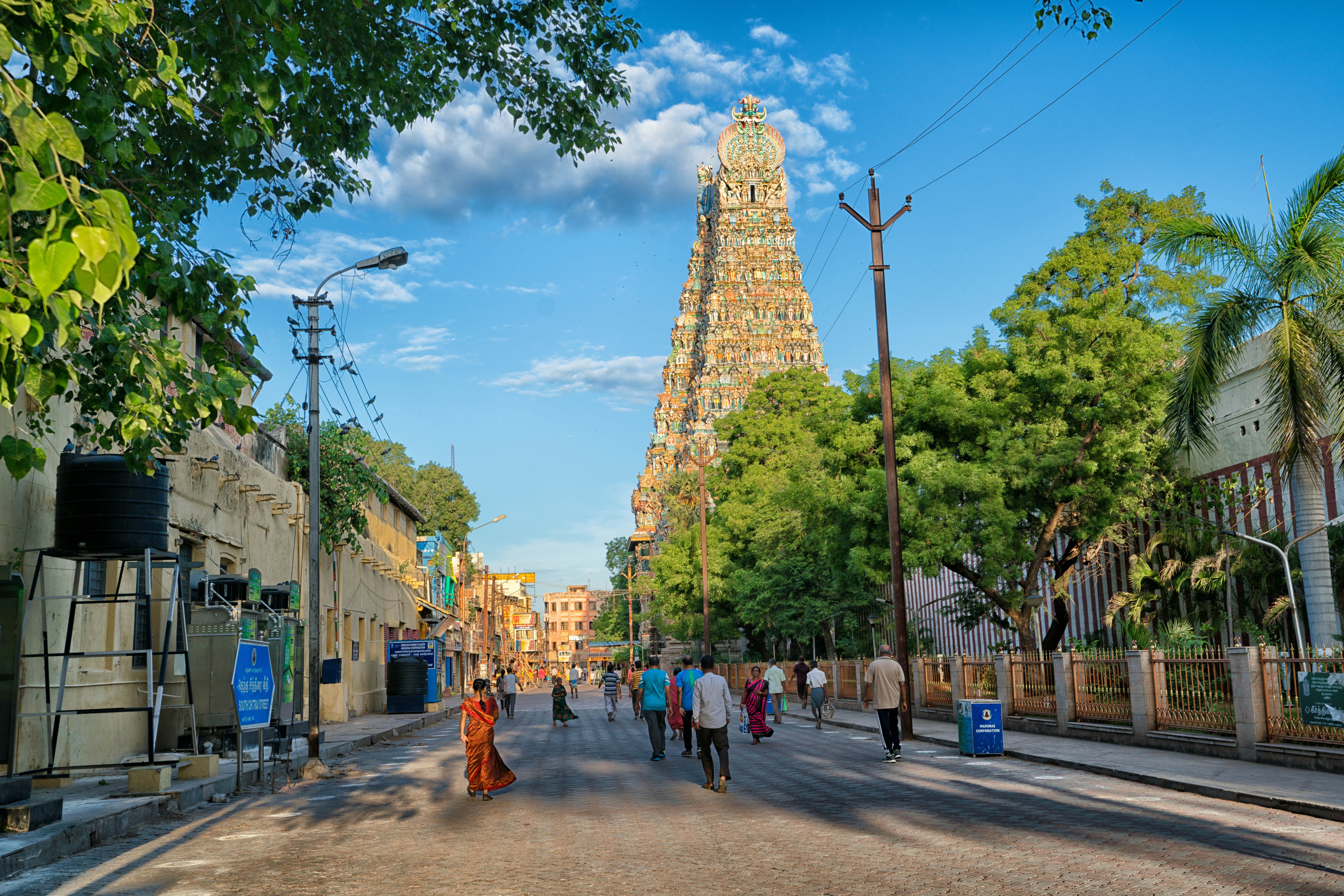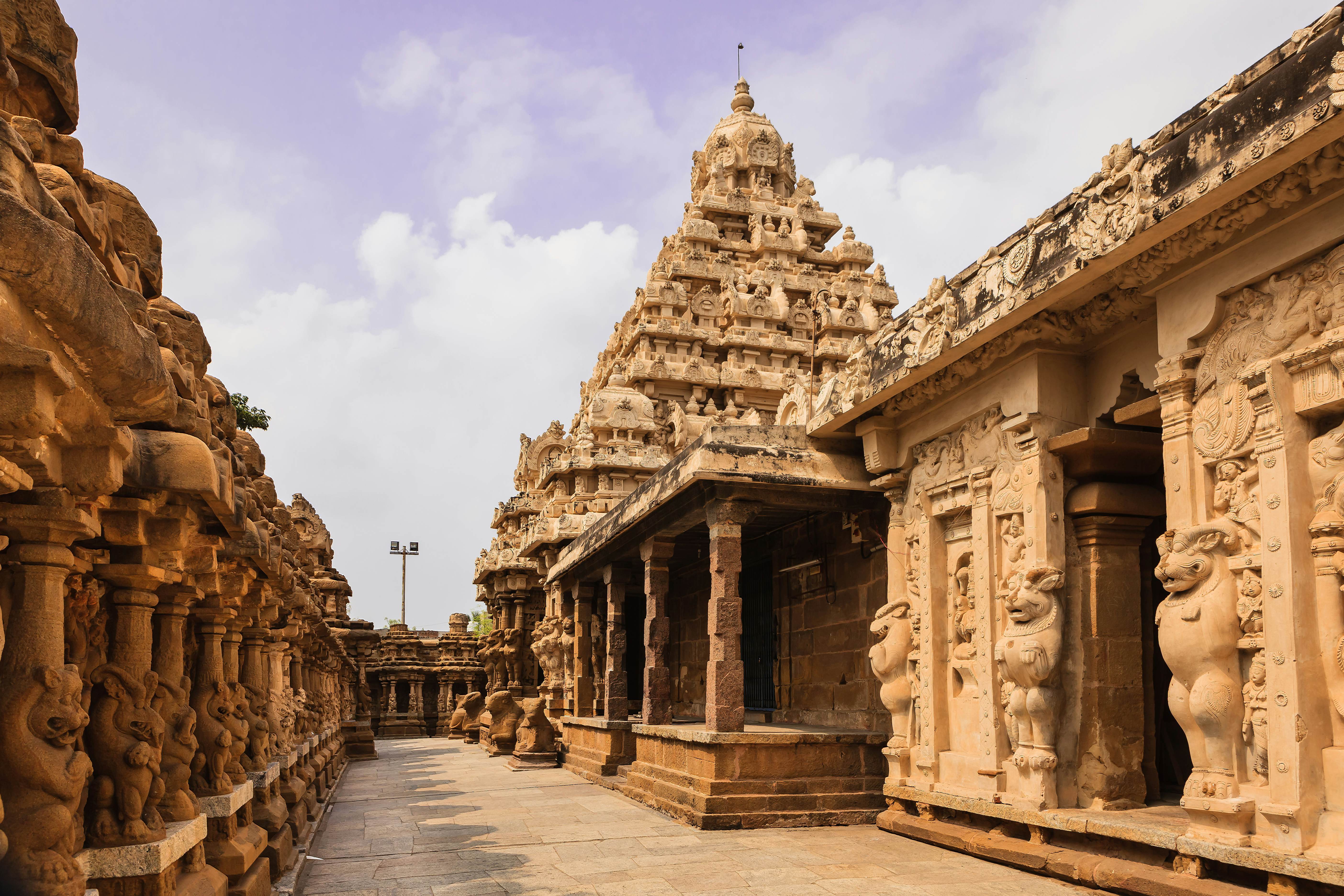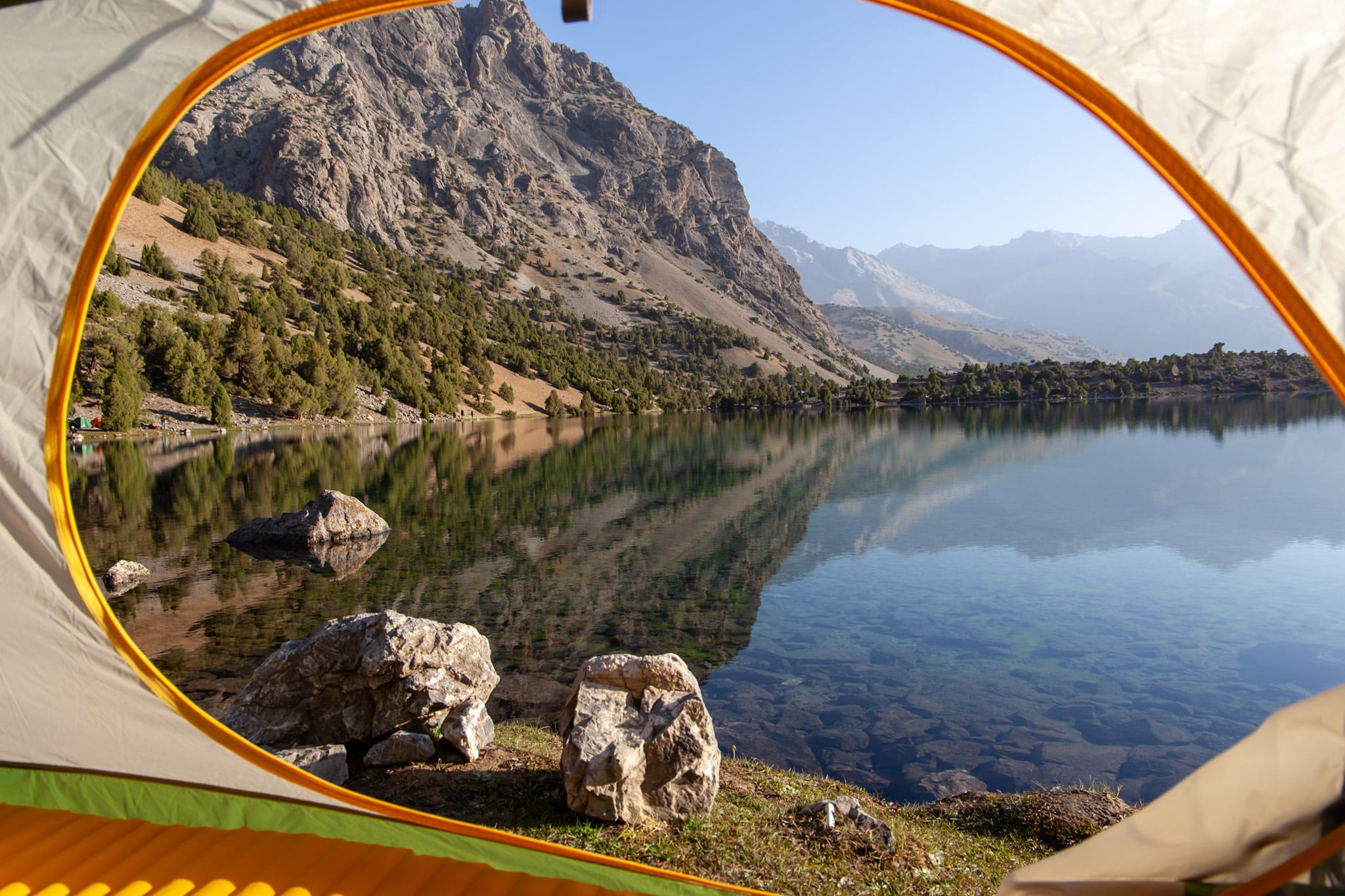A first-time guide to Tamil Nadu, India's southernmost state
Tamil Nadu is a region that has seen it all. Here's what you need to know to plan the perfect visit.

Tamil Nadu is called the Land of Temples, and for good reason. Here history isn’t just tucked behind museum glass but carved into stone and etched onto temple walls. But to see Tamil Nadu only through the lens of its temples would be to miss the full picture.
This land has seen it all – the grandeur of the Pallavas, the might of the Cholas, the vision of the Pandyas, the rule of the British, and the restless pulse of modern India. And through it all, India's southernmost state has remained a place of striking contrasts, where tech and business parks stand side by side with Chennai’s old quarters and where Chola-era temples whisper of forgotten dynasties, all while colonial mansions in the Nilgiri Hills buzz with tales of empire. The past and present don’t just coexist in Tamil Nadu, they keep moving forward, much like the land itself.

Meenakshi Temple in Madurai. sharptoyou/Shutterstock

Stucco figurines on the temple exterior. saiko3p / Shutterstock
When should I go to Tamil Nadu?
For many, Tamil Nadu equals heat, and while that is not entirely wrong, the timing makes all the difference. From November to March, the weather is at its best as winter begins making it perfect to explore this tropical destination without feeling like you are in a sauna. Hill stations dip to a crisp 11°C (52°F) apt for steaming cups of tea. If lush landscapes and roaring waterfalls are the goal, July to September delivers, but with risks – heavy rains can flood cities like Chennai, and hill stations are prone to landslides. For those drawn to festivals, January’s Pongal (harvest festival) fills the air with kolam art (elaborate designs of colored chalk) and the aroma of sweet rice, while April’s Chithirai Festival turns Madurai into grand processions and temple rituals.
How much time should I spend in Tamil Nadu?
A week is enough to cover the core experiences, but two weeks let Tamil Nadu truly sink in. Start with Chennai, where Tamil traditions, colonial architecture and Marina Beach life blend into one. Use it as a base for a day trip to the shore temples of Mamallapuram (Mahabalipuram). Then, head to Puducherry (Pondicherry), a French colonial coastal town, and visit the experimental community of Auroville. For a quieter alternative, swap it for Tharangambadi (Tranquebar), another colonial coastal town with Danish roots and sea-swept fort walls.
Temple architecture enthusiasts head south to Madurai's Meenakshi Temple, a spectacle of color, sculptural art and traditional rituals. Or, visit Thanjavur, where the Brihadeeshwara Temple and grand palaces echo the legacy of Chola kings. Dedicate a day to Chettinad, staying in a heritage mansion to experience Chettiar hospitality. Then, continue to Rameswaram and Dhanushkodi, where India meets Sri Lanka across the sea. Another option is Kanyakumari, India’s southernmost tip, where three seas converge beneath a golden sunset. Wrap up the journey with a retreat to the cool hill stations of Ooty or Kodaikanal.
Is it easy to get in and around Tamil Nadu?
Tamil Nadu gives you options. Fly in, take a train, hit the road, or hop on a rickshaw, whatever suits your pace and budget. The state has international airports in Coimbatore, Madurai, Trichy and Chennai. Chennai is best connected with direct flights from Dubai, Singapore, Bangkok, London and Frankfurt, making it the easiest entry point for international travelers. Domestic flights link all major cities in the country, but for budget-friendly travel within Tamil Nadu, trains or buses are a better bet.
For an affordable way to hop between cities, take the train. Chennai, Madurai, Coimbatore and Trichy are major railway hubs with well-connected routes across India. Overnight sleeper trains are budget-friendly, while AC coaches and Vande Bharat trains are comfortable for daytime journeys.
If long drives and impromptu temple detours sound appealing, Tamil Nadu, with some of the best roads in the country, makes self-drive rentals an option for confident drivers. But if city traffic, winding hill roads and the occasional cow crossing aren’t your thing, hiring a car with a driver is a stress-free but costly alternative. Government and private buses connect cities and neighboring states, offering AC, non-AC, and sleeper options to suit every budget.
In cities, rickshaws and local buses are the go-to, though crowded and chaotic at peak times. While buses have signage, it is primarily in Tamil, and most auto drivers speak little to no English. Asking the conductor for your stop usually helps in getting on the right bus or reaching the correct drop-off point. For further conversations, rely on Google Translate. Another hassle-free alternative is using ride-hailing apps like Ola and Uber that allow navigation in English, and is also useful if bargaining with rickshaw drivers isn’t on the agenda.
Cities like Chennai have metro rail and suburban trains, both of which offer English signage and an easier option for commuters to dodge traffic.

Brihadeeshwara Temple in Thanjavur (Tanjore). Malcolm P Chapman/Getty Images

Kailasanathar Temple in Kanchipuram. ChandraDhas/Getty Images
Top things to do in Tamil Nadu
Take a heritage trail through the temple towns
To visit Tamil Nadu and skip its history and heritage would be a sin. But heritage site-hopping without knowing the stories behind them can feel like ticking off a sightseeing checklist of ancient stones. To decode the past beyond textbook dates, consider a one-day or multiday heritage trail with the historian S. Jayakumar from Courtyard Tours. Understand the Pallavas, Pandyas and Cholas, some of the longest-reigning dynasties that left behind architectural masterpieces in towns like Kanchipuram and Thanjavur (Tanjore). Trace the evolution of rock-cut architecture, hear stories of empires rising and falling, stand before towering monolithic statues, and decipher inscriptions that reveal the economic, cultural, and social fabric of a bygone era.
Trek to a no-footwear village
No Google Maps, vehicles or roads: the only way to reach Vellagavi village in Kodaikanal is by following worn foot trails through the forests of the Western Ghats along with a guide. The 8km (5-mile) trek (round trip) is no easy feat, but for those drawn to adventure, it is a journey worth taking through rugged terrain. What makes Vellagavi truly unique is its centuries-old no-footwear policy, a practice the villagers have followed for generations, believing that the entire hamlet, over 300 years old, is sacred land. Though these restrictions have softened over time the village is a sight to behold, with neatly aligned houses, small temples and a primary school where time seems to move a little slower. For those drawn to trekking, Tamil Nadu has 39 other government-approved trekking routes to experience its diverse natural landscapes led by guides from local communities.
Journey through time in Chettinad’s heritage villages
Once the home of the wealthy Chettiar merchant clans, Chettinad is a cluster of 73 villages dotted with heritage mansions, where grandeur refuses to fade. For a heritage walk, Kanadukathan village is the best place to start, its lanes lined with mansions built between the 1850s and 1950s. A mansion-hopping tour wouldn’t be complete without stops at Athangudi Palace, VVR House, CVRM Heritage House, and Lakshmi House, all of which open their doors to visitors. To experience the warmth of Chettinad hospitality, stay in a converted heritage mansion or savor a spice-laden Chettinad feast at the Bangala or Visalam (with prior booking). To experience Chettinad’s artistry firsthand, visit the Athangudi tile factory and Chettinad handloom saree weaving centers. The Chettinad Heritage and Cultural Festival, a community-led event held in September, is a must for those looking to experience the region in its utmost glory.
Explore India's marine national park at Rameswaram
Rameswaram on Pamban Island is mostly known as a Hindu pilgrimage site, with the Ramanathaswamy Temple one of the most important shrines steeped in the legends of the Ramayana. But beyond it lies a coastal paradise with India’s most stunning beaches. Start your journey with an unforgettable train ride across the Bay of Bengal through the engineering marvel of Pamban Bridge, India’s first sea bridge that connects the island to the mainland. Just beyond lies a stretch of the Gulf of Mannar Marine National Park, South Asia’s first marine biosphere reserve, a world of thriving coral reefs and marine life. While public access is restricted, Rameswaram Tourism’s ecotourism initiative takes visitors to Kurusadai Island on a glass-bottom bridge and offers diving, snorkeling and windsurfing outside its protected boundaries. A short drive away, the ghost town of Dhanushkodi – abandoned after a devastating cyclone – sits at the dramatic meeting point of the Bay of Bengal and the Indian Ocean, a breathtaking sight that also marks India’s maritime boundary with Sri Lanka.
My favorite thing to do in Tamil Nadu
There is something about Tamil Nadu that feels like stepping into different worlds, each more captivating than the last. For those drawn to the past, DakshinaChitra Heritage Museum is a window into South India’s heritage, where traditional homes, arts and crafts come together to recreate a world untouched by time. Then there’s Kolukkumalai Tea Estate, the highest tea estate in the world, offering a sunrise so spectacular that the early start feels like a small price to pay. Meanwhile, Auroville is a living experiment in sustainability, community living and spirituality, shaping an alternative way of life. And nothing quite compares to a boat ride through Pichavaram’s silent, maze-like mangrove forests, the second largest in the world.
How much money do I need for Tamil Nadu?
Whether you are a backpacker counting every rupee or a traveler who prefers comfort over cost-cutting, Tamil Nadu lets you explore its culture-soaked wonders without torching your wallet. The only word of caution for budget travelers is that cleanliness can be a hit or miss, so be mindful when choosing eateries – especially in Chennai, foodie heaven – and read reviews when booking budget stays.
When it comes to payments, cash and digital Unified Payments Interface (UPI) transactions like Google Pay, Paytm and PhonePe rule the streets, but are largely unavailable to foreign travelers. ATMs are easy to find in cities and towns, and most places accept physical credit or debit cards, but don’t bet your trip on international cards working everywhere. If heading to rural Tamil Nadu, carry some Indian rupees in cash because the last thing you want is to be stuck in a sleepy town where cards aren’t accepted and phone signals are too patchy for digital payments.
- Single bed in hostel: ₹300–1200 (US$3.50–14)
- Premium room for two: ₹10,000–20,000 (US$120–240)
- Car rental: ₹14/km + ₹300 per day driver allowance to ₹17/km + ₹500 per day driver allowance (US$0.17 + US$3.50 to US$0.20 + US$6)
- Metro in Chennai: ₹10–50 (US$0.12–0.60)
- Vegetarian meal at a modest eatery: ₹60–100 (US$0.75–1.20)
- Fine dining for two: ₹1000–3000 (US$12–36)

How do I dress in Tamil Nadu?
Tamil Nadu’s tropical, humid climate calls for light, breathable fabrics like cotton and linen. A scarf or hat helps shield against the sun.
In temples, women should cover their shoulders and knees as a sign of respect, and men sometimes are expected to remove their shirts before entering.
How safe is Tamil Nadu?
Compared to other Indian states, Tamil Nadu is generally a safe destination for tourists, including solo and female travelers. The locals are friendly and welcoming, though don’t be surprised if curious strangers ask for selfies; it is usually harmless, but declining politely is always an option. That said, staying cautious, being aware of your surroundings, and trusting your instincts go a long way. Whether in big cities or rural villages, avoid deserted areas at night. When arriving at a new destination, plan to be there before midnight unless a taxi has been pre-arranged by your accommodations. For late-night travel in the city, ride-hailing apps or public transportation buses are safer alternatives to autos or private taxis. Women travelers can dial Tamil Nadu’s 24-hour helpline number 181 in case of a safety emergency. Carrying pepper spray (available in most Chennai pharmacies) or a personal safety alarm can provide extra peace of mind.










































































































































































































































































